General computer tips and How-to's
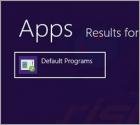
Windows 8 incorporates a new feature called Windows apps and some related information has been provided in our previous article, 'Viewing the size and removing apps in Windows 8'. One of these Windows apps replaces Windows Media Player as the default software for playing music files. In this tutorial, we describe how to revert to Windows Media Player as per previous versions of Windows.
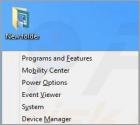
Following the release of Windows 8, many computer users have noticed that the advanced boot menu access using F8 key has been removed. The main reason for this was that Microsoft implemented a new faster booting system for Windows 8. As a result, the advanced boot menu, including the Safe Mode option, has been removed. In order to boot into Safe Mode, you must first boot Windows normally, and then restart in Safe Mode. There is, however, an option to make it available again. This tutorial describes how to enable or disable the F8 boot menu on Windows 8.
When a user boots a fresh copy of Windows 8 for the first time, the desktop is empty apart from the Recycle bin icon. By default, Windows 8 does not display any other icons (My Computer, Documents, Control Panel, etc.) In order to add these additional icons, you need to configure certain desktop settings. In this tutorial, we describe how to add/remove desktop icons.
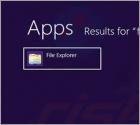
Regular computer users often lack knowledge of malware and the methods employed by cyber criminals to infect computers connected to the Internet. Cyber criminals trick PC users into installing rogue programs by hiding file extensions and using deceptive icons. By default, Windows 8 does not show file extensions, and consequently, developers of rogue programs commonly exploit this setting. For example, you could potentially download a '.exe', file which has the icon of an MS Word file and named 'something.doc'. Since Windows 8 does not display the file type at the end of the name, you may be tricked into opening such a file without realizing that this could be malware. This tutorial describes how to change the Windows 8 settings to view file name extensions, and thus avoiding this problem.
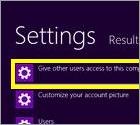
Windows 8 provides a facility to administer several user accounts on a single computer. One of the main reasons for providing this functionality is security. Owning one user account with administrator rights and maintaining the other accounts with standard permissions makes the computer more difficult to infect with malware. Furthermore, it is more convenient, since personal files are stored separately and thus users do not have to worry about data loss. Windows 8 also allows the creation of a live Windows account. This type of account provides more options, since you can download live applications, use Mail, Calendar, and other features. This tutorial describes how to add or remove user accounts in Windows 8.
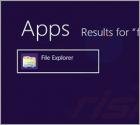
For safety reasons, all Windows operating systems hide certain folders and files. By default, system files and folders are not visible to any users, including administrators. When fixing your computer and for other reasons, however, there may be a requirement have visibility of those files and folders in order to make changes. When your computer is infected, most of the core malware files are hidden (cyber criminals use this tactic to prevent easy removal of their malware). Malware or virus removal is just one of many cases when PC users might need visibility of their hidden files and folders. In this tutorial we describe how to view hidden folders and system files in Windows 8.
More Articles...
Page 3 of 6
<< Start < Prev 1 2 3 4 5 6 Next > End >>